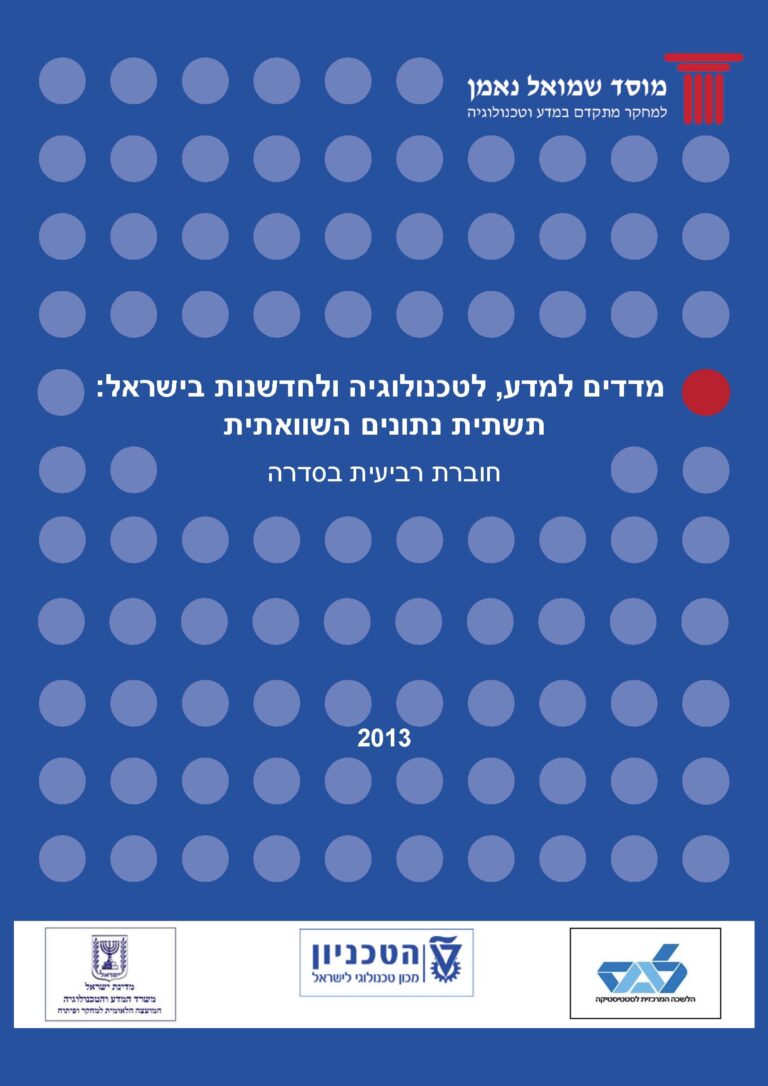Neaman Institute is pleased to present the Fourth edition of the “indices of Science, Technology and Innovation in Israel: An International Comparison.” This report is published in cooperation with the National Council for Research and Development Israeli Central Bureau of Statistics.
This publication contains many key figures for Israel regarding science and technology input and output, and covers more than a decade of international comparisons, as well as many other indices. This information can contribute to the understanding of the comprehensive picture of Israeli R&D, which is the product of policies set by the government, the higher education institutes and the business sector. It can also shed light on the impact these policies have on the Israeli economy.
One of the key objectives of Israeli science and technology policy is to promote a balanced R&D system and to ensure that the R&D and innovation orientations contribute to Israel’s society and economy.
We hope this publication will provide useful insights on Israel’s national and international policies, and will contribute to the correct comprehension of the current status of Israeli science, technology and innovation.
This report on indicators of science, technology, and innovation in Israel—the fourth since the series began in 2006—is arranged around seven main themes:
- National civilian R&D expenditure: measuring the extent of R&D in Israel in financial and other terms, distinguishing between those who do the work and those who fund it (Chapter 2);
- S&T human capital: the size of the labor force that develops and assimilates various areas of S&T knowledge, the various settings of training and study, and additional characteristics (Chapter 3);
- indicators of economic returns and outputs of S&T activity in terms of added sectoral product, economic growth, and improvement of labor and total-factor productivity (Chapter 4);
- outputs of S&T development: scientific publications and citations, and registration of patents (Chapter 5);
- R&D and innovation, parsed by selected industries and by research institutes: a general overview of main industry groups focusing on those in S&T, scientific R&D, biotechnology, innovation surveys, and government and public research institutes (Chapter 6);
- globalization in R&D and scientific endeavor: indicators of the development of international relations based on technological developments and scientific research—the extent of international trade based on technological knowledge, R&D centers of multinational and foreign firms, foreign investments in high-tech, and international research relations (Chapter 7);
technological readiness: communication infrastructures and information technologies, their assimilation in society and government, and the public’s attitudes toward S&T issues (Chapter 8).












